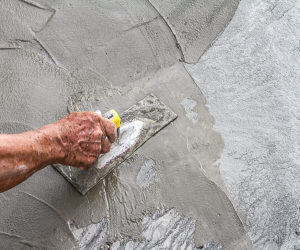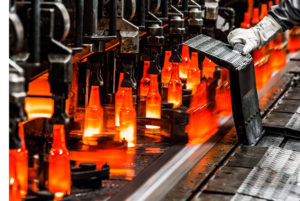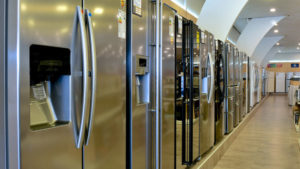-

DEC9
9 Comments by Admin7 everyday things which are major contributors of CO2 emissions..
1. Fashion Industry

Fashion Industry is one of the fastest growing economies in the world. With fast fashion, fast approaching and taking over the world, there’s no stopping the massive growth of the industry. But, this growth comes at a large cost.
A large amount of water is used in the textile industry and untreated toxic wastewater gets dumped in the river water. The agricultural waste in the form of fertilisers and other contaminators for cotton production leads to a large amount of pollution. The different processes of production of textiles are a major source to the carbon footprint.

Fashion products have a very short span of life and sooner or later, they end up in the landfill. Landfills are one of the biggest hazards today. Unlike what we believe, the donated clothes or even the ones which are claimed to be processed into new garments do end up in the landfill.
Next time you buy your clothes do give this a thought and try and reuse as much as you can.
2. Concrete Industry

Take a moment and look around you and it will be difficult for you to not spot concrete. Concrete is excellent for construction and hence we use it everywhere. It is used massively because of its durability which provides safe buildings, roads, infrastructure (a total of 10 billion tons of concrete is annually produced around the world)
Cement, a component of concrete is a major producer of greenhouse gases. It accounts for 8% of worldwide man-made emission of CO2 gas. The chemical process of making cement releases about 50% of the gas while the burning of fossil fuels for the process of production accounts for another 40%.

Also, concrete production demands a large sum of water. Water is a precious material these days with our natural sources of water depleting day by day. Fulfilling the use of industrial water in the form of concrete can be a challenge in the futuristic drought conditions.
A lot of research is going on in terms of reducing the harmful effects of concrete or finding better replacements for the material. Let us hope we can find a way to reduce the harm.
3. Cheese Industry

Looks like all our vegan friends are going to be happy about this. When shifting to an environmental friendly lifestyle, most people think of reducing meat consumption. But have you ever given a thought to cheese? A recent study by researchers at Oxford University and Swiss agricultural research centre Agroscope showed that cheese was the fourth-worst offender for carbon emissions out of protein-rich foods, behind beef, lamb and crustaceans.
A majority of these emissions occur during the production phase. The production of a 1.5-ounce serving of cheese might be expected to produce around 16 ounces of carbon dioxide equivalent. A lot of efforts are being made by the dairy industry around the world to reduce its green-house gas emissions. Here’s hoping for success in the field because who doesn’t love Cheese!
4. Glass Furnaces

Most Glass Furnaces are never turned off, operating at temperatures of up to 2,800 degrees Fahrenheit and emitting greenhouse gases including carbon dioxide, carbon monoxide, nitrogen oxides and sulphur oxides. Because a glass bottle weighs more than aluminium or plastic alternatives, it produces greater transport emissions.
One study by researchers at the University of Manchester, UK, concluded that glass containers have a bigger carbon-footprint than plastic or aluminium. But if a glass bottle is recycled enough times, it can have a smaller footprint than a plastic bottle.
5. Internet

The world streams one billion hours of YouTube videos every day. Although Google (which owns YouTube) is powered entirely by renewable energy, watching videos still creates emissions at the viewers’ end, from the energy used by network equipment, caches, and end user devices, according to a study conducted by Bristol University in the UK.
They estimate that electricity associated with YouTube produced 10 million metric tons of CO2-equivalent gases globally in 2016 — the same as a year’s worth of emissions from two million passenger cars.
The information communications and technology industry which delivers internet, video, voice and other cloud services – produces more than 830 million tons of carbon dioxide annually. That’s about 2% of global CO2 emissions.
With Netflix and other streaming channels hitting the internet, its predicted that the use of the internet is going to keep on increasing from here on. It’s ironic how we are talking about this on an article which is on the internet!
6. Refrigerators

Refrigerators use refrigerants like HCFC and CFC which are extremely harmful to the environment and the ozone layer specifically. With the awareness of the depletion of the ozone layer increasing, companies have started using a type of refrigerant called HFC – 134a which claims to not deplete the ozone layer. The main refrigerant now used is R-600a, or isobutane which has a smaller effect on the atmosphere if released.
Apart from the harmful effects of these gases, once the life of the refrigerant ends most of its parts end up in the landfill. If you would’ve noticed, most of the refrigerators are made from plastic which some or the other day end up in the landfill and cause hazard.
I think the ideology of reduce and reuse is difficult to apply on this one but let us hope we will find a way out to reduce the harmful effects of refrigerators.
7. Buildings

With the constant change in temperatures on both the extremities, heating and cooling of buildings have become a must in most of the countries. And this comes at a high cost. According to the International Energy Agency , the building and building construction sector combined are responsible for 36% of global final energy consumption and nearly 40% of total direct and indirect CO2 emissions.
The government has been making a lot of efforts to reduce the emissions massively by implementing incentives for solar powered and thermally insulated buildings.

Every other thing we use has some or the other impact on the climate. We cannot end up living a primitive life by giving up on everything. But let us do our bit in the little way possible. The practice of reduce, reuse and recycle is a key takeaway from all of the issues listed above.
We urge you to spread the word around and make people aware. Awareness is a major issue with climate change and it is the only way to curb the carbon emissions at a larger scale. (and of course government policies, carbon tax and so on)
Sources: CNN, Gaurdian, umweltbundesamt, IEA, Economist
Read More



